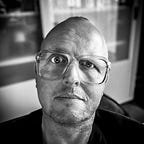How Silvia Rivela creates space at the workplace
Happyplaces Stories (video)
Silvia is an architect by training and a sociologist by vocation based in Madrid. During a break at Social Now! — the conference we were both speaking at — we recorded her story while she was dancing in the streets of Lisbon.
She is the director of Cohesionist, a platform for team-building experiences to improve group cohesion, and principal & co-founder of DOWE, an innovation laboratory for workspaces. In addition, she works to improve people’s well-being at work: physically, mentally, and emotionally by transforming offices to attract talent, build culture, and increase productivity by improving organisations’ habits and processes.
This transcript has been edited for clarity and length.
Question everything and everyone
I’m an architect. But I don’t want to refer to myself as an architect because what I mainly have been doing the last year is being a sociologist. I work as a workplace strategist. I work with companies to create office spaces to foster sustainability holistically, which means that we create spaces that increase people’s mental, emotional and physical well-being. It may sound a bit ambitious, raising the question of whether a workplace can solve emotional and mental issues. Everything that surrounds you affects you. Sensitivity will be affected if a space isn’t beautiful, dirty or contaminated. Maybe you’re unaware of that, but some people are sensitive to things like this. I’m the kind of person who visits companies to ask many questions to people in all the layers of the organisation. When you’re designing, when you want to create a space to create a new kind of behaviour, a new habit, or foster what is already there, you need to be very thorough.
Everything that surrounds you affects you.
So, how do you create a space that fosters well-being? For example, think about a space where you can be quiet. Where there is no noise, and you can focus on what you are doing that inspires you. Most people then think about surrounding themselves with beautiful things, like nature. People usually become quiet if you go to a forest, and your stress levels will decrease. In design, we call this ‘biophilic design’. You can also use and experience this at home, as many houses are surrounded by nature. However, you can not take nature for granted because taking care of nature requires effort. I’m not good with plants, but I’m trying because I realise that nature is important to me.
Space to have ideas
Think about the place where you can work better. Or where you can have the best ideas. That, for me, is the shower. Or lately, doing the dishes. It is a sort of active meditation. While doing something ‘automated’, the ideas come to your brain. Then you’re not thinking about work; it just happens, like magic. How do you translate that to the office space? How do we translate that to our homes? Because today, home is also a space to work. Even the streets. I’m the kind of person who likes to walk around. You can find me working on the beach, in a park or a garden. My work allows me and allows me to do that. I have the flexibility to choose to do that as a digital nomad. For me, the best place to work is a place surrounded by nature like a beach or a forest, that’s it. It is important to find your spot.
The work environment should reflect that the company’s leaders are listening to the workforce. That contributes to the company culture or the environment as a safe space to share and create beautiful things.
Design for continuous change
In terms of office spaces and companies, there is no recipe. Every company is different, like every person. Ask people what they want, figure out what they need and try to create something not fixed, flexible and adaptive office environment. We change all the time. I’m not the same person that I was a year ago. Your company today is not the same as last year, and will certainly not be the same next year. I mostly work with startups and scale-ups. Knowing this is crucial to them because usually, their headcount doubles from one year to the next. For them, it is important to know how to adapt to our constantly changing circumstances. They must always know the circumstances of the people working there and adapt to that. Then their workforce will be happier and more productive because they don’t need to worry if they do the right things or the things right. Their environment should reflect that the company’s leaders are listening to them. It contributes to the culture or the environment as a safe space to share and create beautiful things. Because in the end, work should be more than something you have to do. It should be something that you want to do because you like it.
